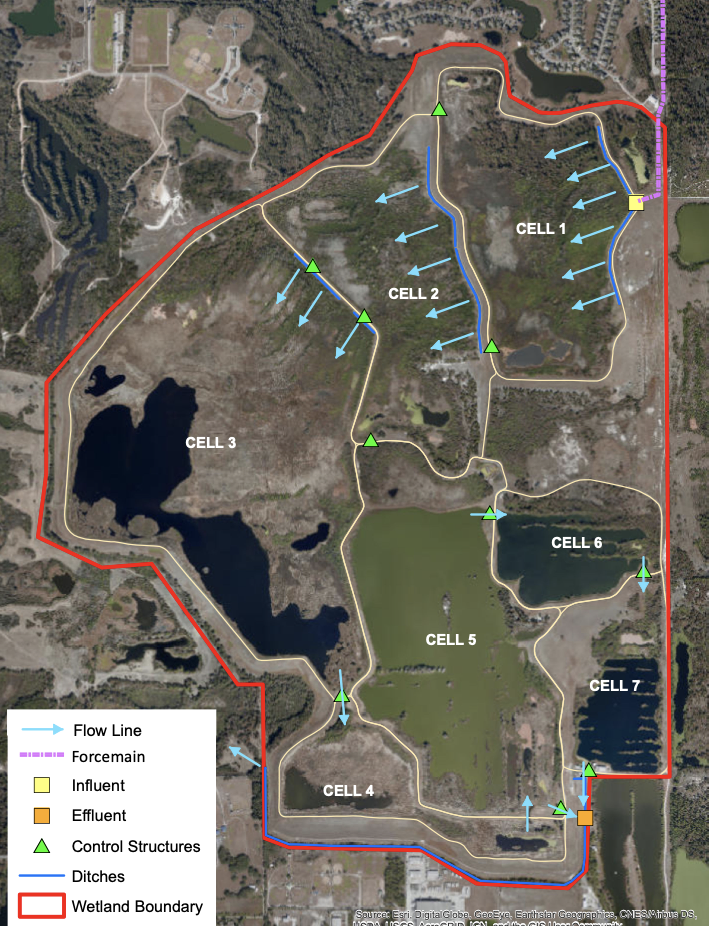Plastic Pollution in Urban Waterways
Overview
Plastic pollution is a major threat to global water resources with implications for the environment, economy, and public health. Rivers play a key role in this emerging environmental issue, carrying material released in the terrestrial environment to the coast. Coastal urban rivers are focal points for intervention to reduce and prevent plastic from entering marine systems. Constructed wetlands and stormwater ponds are additional points for intervention as these systems receive urban microplastic sources and feed into coastal urban rivers. We conduct field data collection, experiments, and modelling in Florida and Cambodia to understand how we can better manage and prevent plastic pollution.
URBAN RIVERS
The objective of this research is to identify spatial and temporal patterns of plastic pollution from urban watersheds into rivers and the transport pathways to the ocean. We are specifically interested in the relationship between watershed characteristics and plastic quantities, the effect of particle properties and hydrodynamics on plastic distribution within the river, and seasonal and flow-driven patterns.
Field Study in the Hillsborough River, Tampa, Florida
Hillsborough River Site in Florida
From May 2018 to October 2019, we conducted a monthly field data collection at three strategic sites in the Hillsborough River, representing distinct degrees of flow accumulation and increasing urbanization. Stationary sampling is conducted using a neuston net (500 µm mesh size), collecting samples at five positions in the cross-section. We use an Acoustic Doppler Current Profiler (ADCP) to create flow and discharge profiles. Samples are processed through laboratory and Raman analysis.
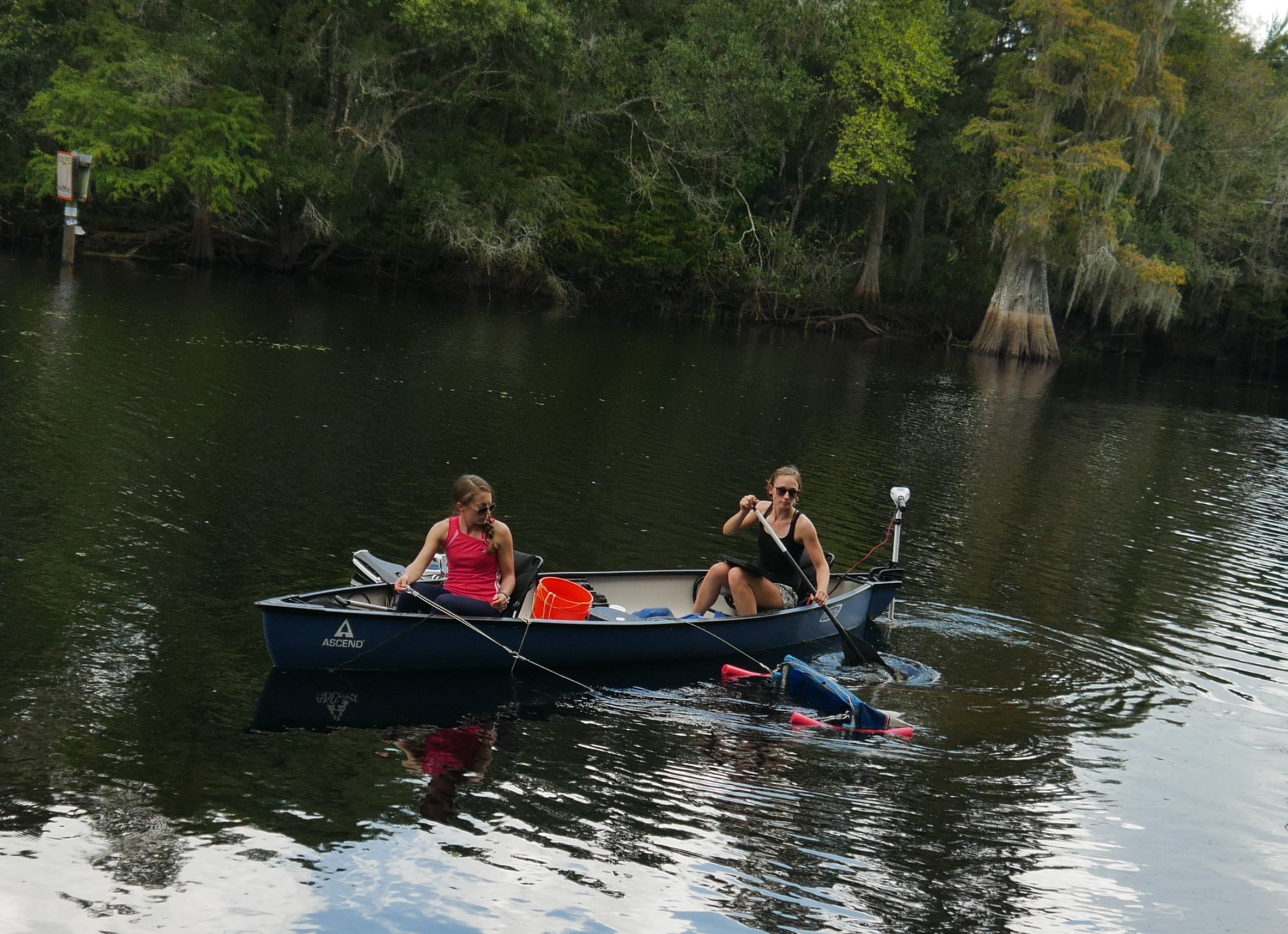
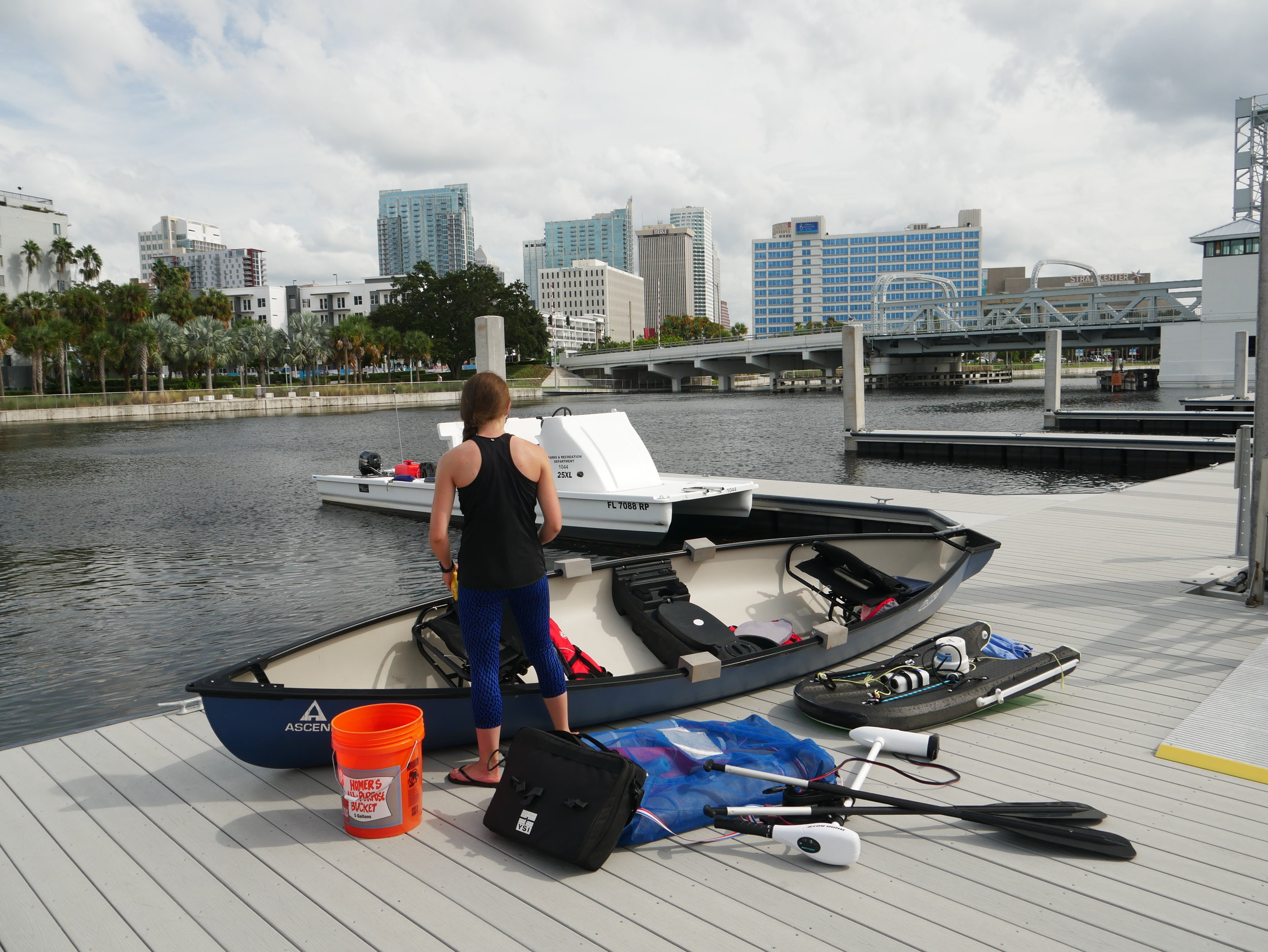
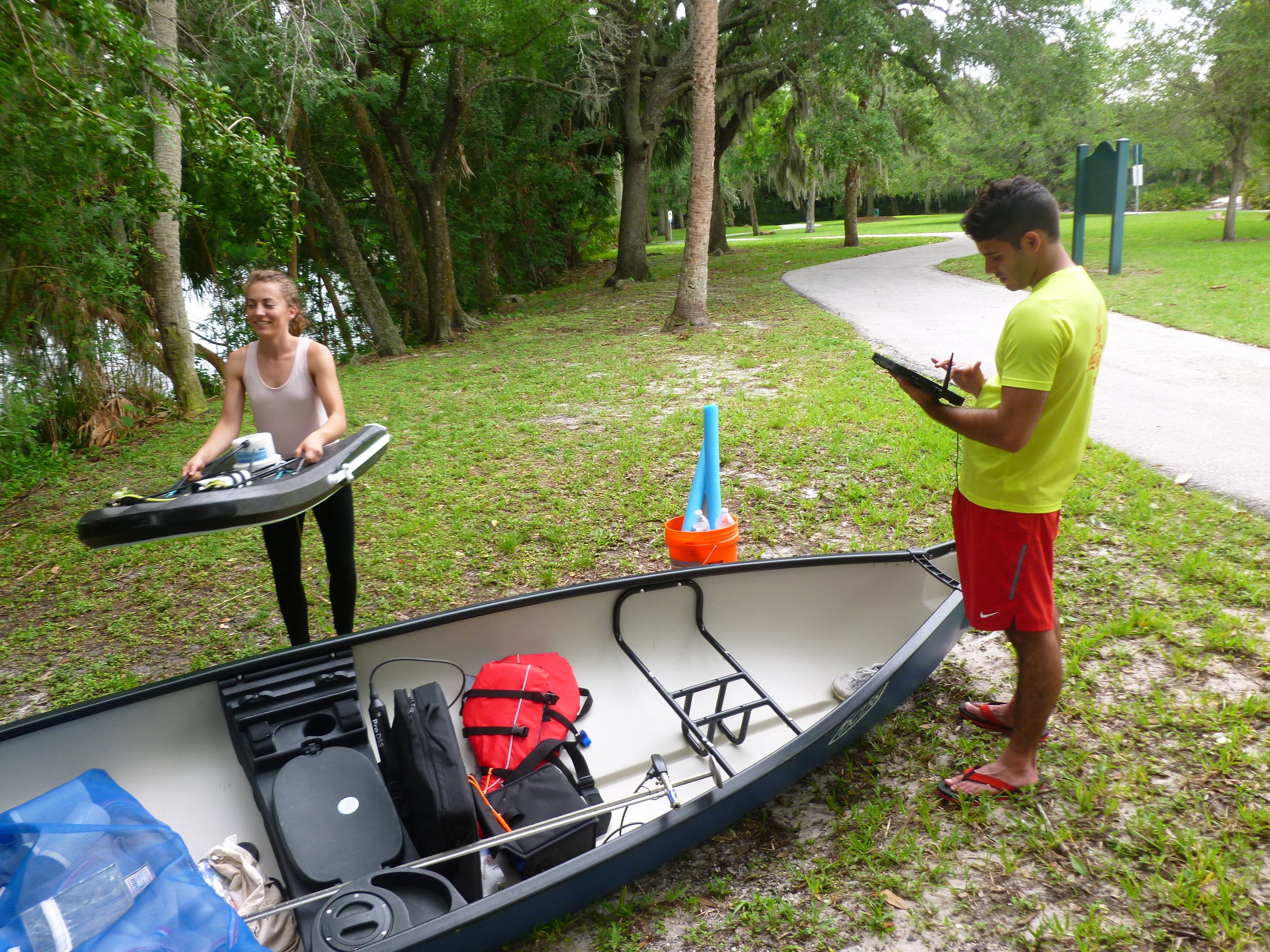

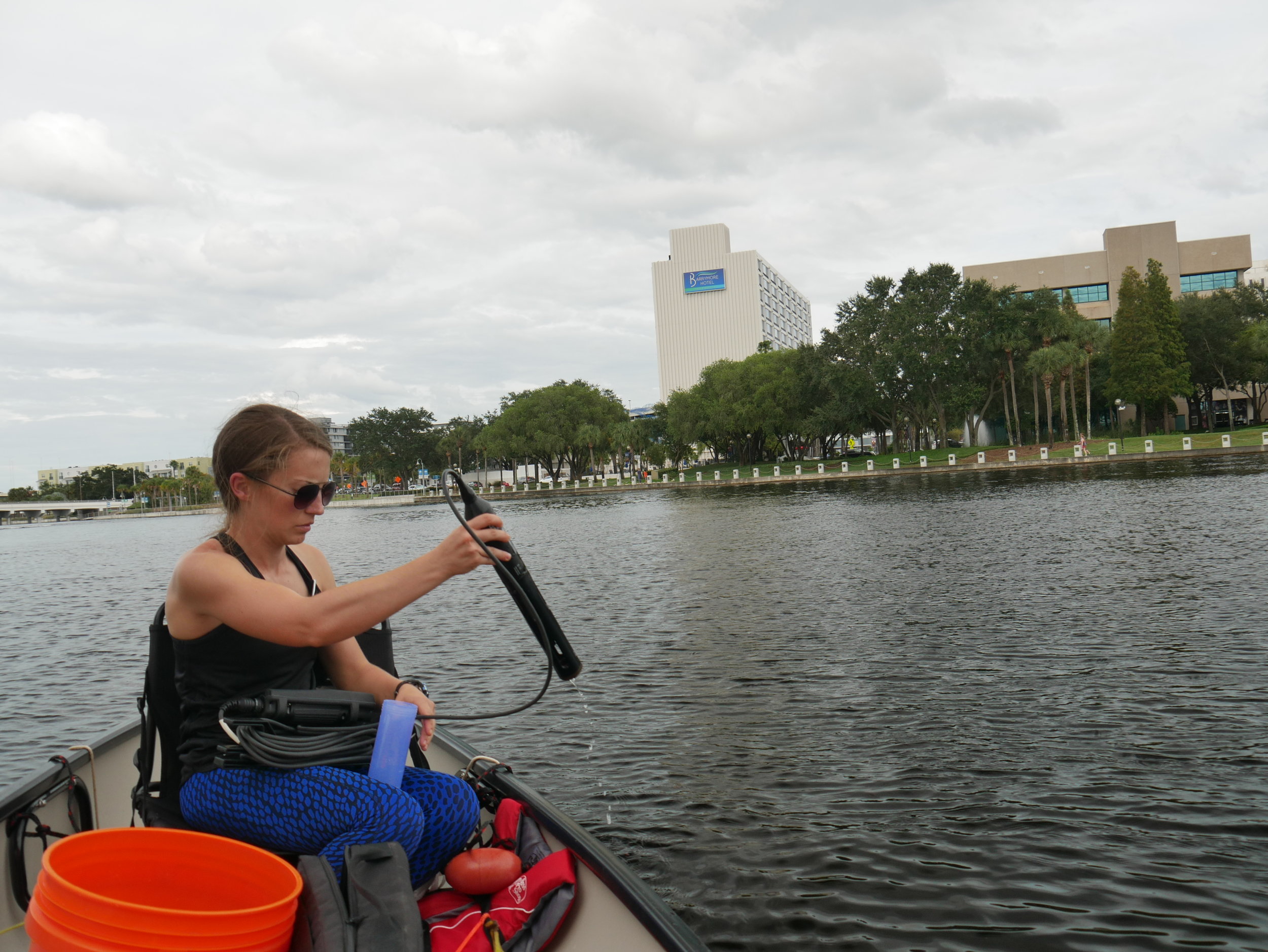

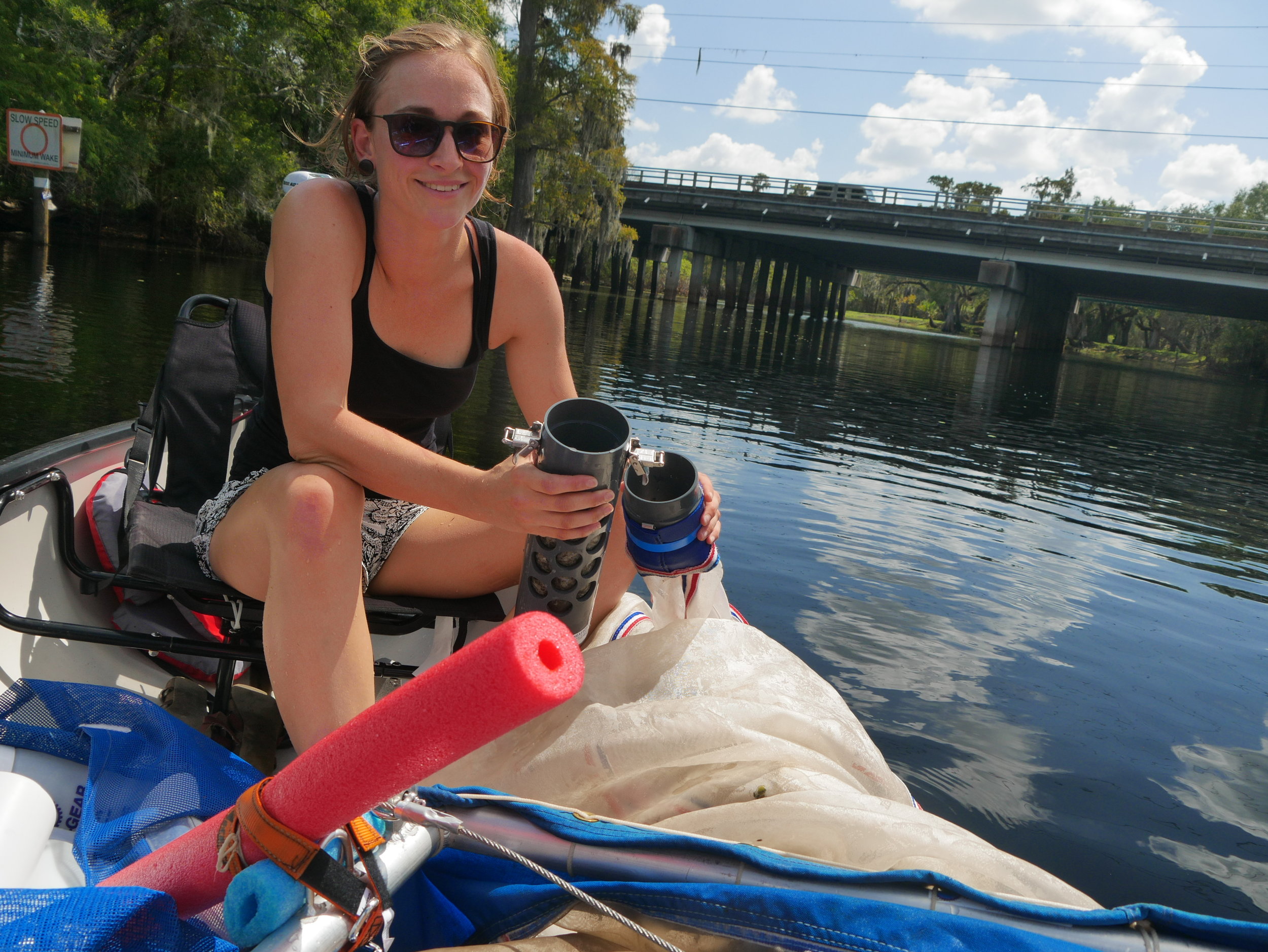
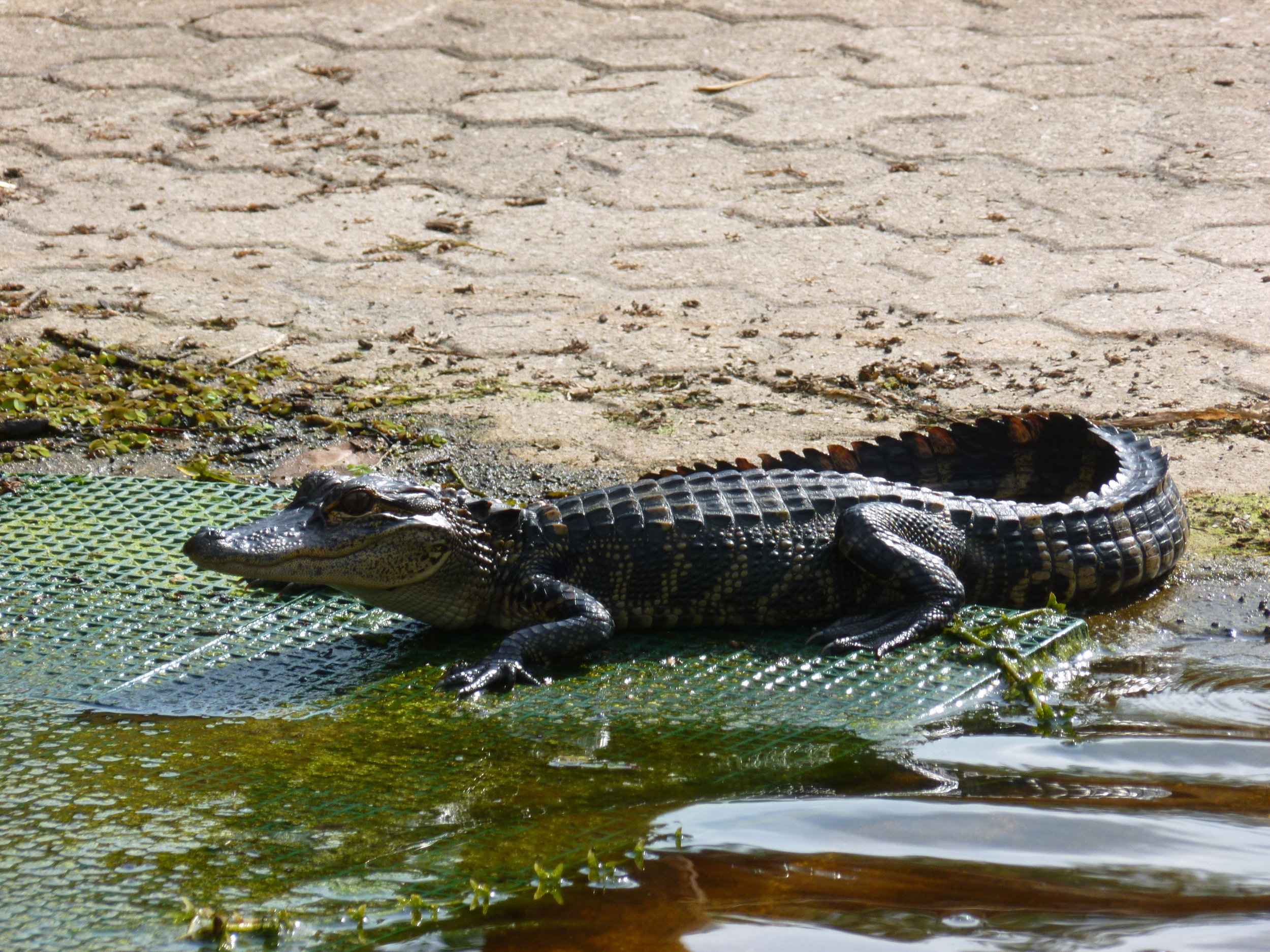
Field Study in the Mekong river floodplain, Phnom Penh, Cambodia
Mekong River Floodplain Site in Cambodia
Supported through the CUAHSI Pathfinder Fellowship, we conducted a seasonal field data collection and assessment of plastic debris in the Mekong, Tonle Sap, and Bassac rivers confluence in Phnom Penh, the capital of Cambodia in August and September 2019. Working with engineering undergraduate students from the Institute of Technology of Cambodia (ITC) and local fishermen, Charlotte applied the methods well established from the Florida field study and adapted them to these much larger systems.

















Team Members
Charlotte Haberstroh
Jessica Carlee Chaffin
Ruben Palomo Martinez
Hope Koutz
Jenna Brooks
Funding
University of South Florida Signature Research Fellowship
CUAHSI (Pathfinder Fellowship)
Florida Stormwater Association (FSA Educational Foundation Scholarship).
USF SIP (Strategic Investment Pool) Award
STORMWATER PONDS
The objective of this research is to understand how particle and pond characteristics influence the behaviors and accumulation of microplastics in stormwater ponds. Parameters of interest include particle surface area, shape characteristics (circularity, roundness, etc.), polymer type, and hydraulic loading.
FIELD STUDY IN STORMWATER PONDS IN TAMPA, FL
Map of Stormwater Pond Sites
Six stormwater ponds in primarily residential areas were selected to represent a range of hydraulic loading capabilities. Samples were taken quarterly in 2021 from the water column and bottom sediments of each site. Water samples were collected using a 300 µm neuston net, and sediment samples were collected using a Petit Ponar grab sampler. A sodium chloride and sodium iodide dual density separation, visual identification, and Raman spectroscopy were used to isolate and identify plastics.
TEAM MEMBERS
Jenna Brooks
CONSTRUCTED WETLANDS
The objective of this research is to assess the fate and transport mechanisms that affect microplastic degradation in urban constructed wetlands. Constructed wetlands receive microplastic from wastewater treatment plant flows. We are specifically interested in constructed wetland roles as a sink for microplastics, modelled fate and transport processes within constructed wetlands, and the degradation capability of constructed wetlands compared to riverine systems. We intend to use the data collected to validate existing microplastic fate and transport models.
Field Study in the Se7en Wetlands constructed wetland, Lakeland, Florida
Se7en Wetlands map (City of Lakeland, 2022)
In 2023, we will conduct a comprehensive sampling assessment of the Se7en Wetlands through sediment and water sample collection. These samples will be processed and the data will be analyzed to determine how distance from inflow and media type affect microplastic concentrations in each cell. This study also seeks to understand how well constructed wetlands retain microplastic and prevent their release in urban rivers.






TEAM MEMBERS
Jess Boyer
FATE AND TRANSPORT PROCESSES
The objective of these research studies is to understand fate and transport processes of microplastics within natural aquatic environments. The two researched processes are settling and degradation. This research seeks to better contextualize these processes and broaden the knowledge gaps in these two process areas.
MICROPLASTIC SETTLING
Models often assume that microplastic terminal settling velocities follow the behaviors of perfect spheres or use empirical results from lab generated plastic particles. The goal of this research is to determine the settling behaviors of micro and macroplastics collected from the environment. The unique shapes that occur as a result of degradation in the environment are expected to play a large role in settling and alter their drag coefficients.
Lab Settling Tests
Plastics collected from stormwater ponds and the Hillsborough River in Tampa, Florida, and the Mekong River in Cambodia were analyzed to determine density, mass, shape characteristics, and polymer type. They were individually released in a settling column to measure terminal settling velocity. Calculated velocities were compared to models for sediments, irregularly shaped particles, and lab generated plastics.
TEAM MEMBERS
Jenna Brooks
MICROPLASTIC DEGRADATION
A year-long degradation study of microplastics in urban aquatic systems is underway. This research seeks to understand the degradation capabilities of a constructed wetland system compared to a riverine system. Microplastic particles are deployed at various depths in the Hillsborough River system to test how depth and media affect degradation. Microplastic particles are deployed at various regions within the Se7en Wetlands constructed wetland to test how water velocity, vegetation, and distance from inflow affect degradation. This research broadens our understanding of degradation processes occurring in natural aquatic environments.
TEAM MEMBERS
Jess Boyer





